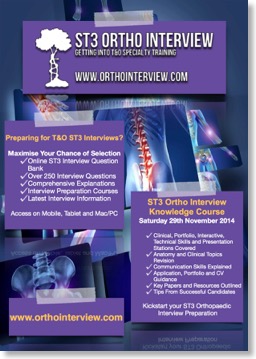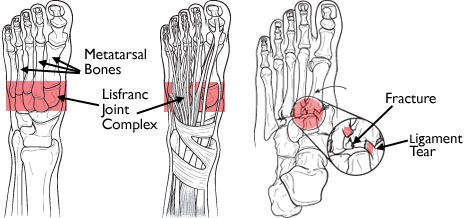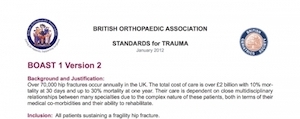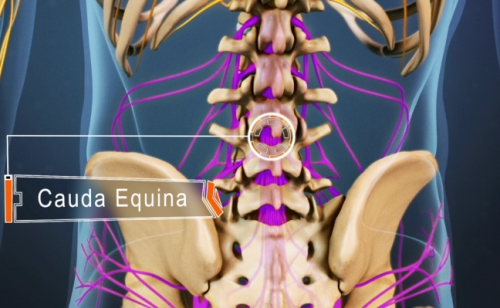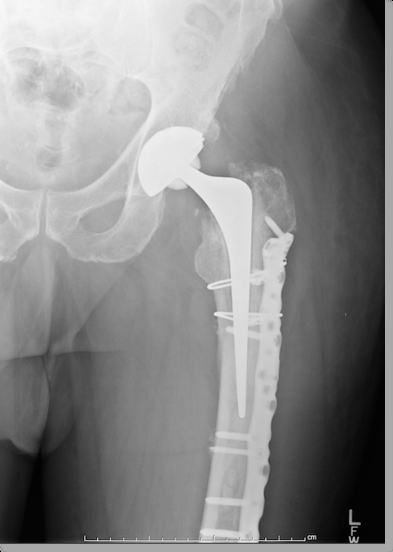
Today’s Wednesday Blog gives an overview of periprosthetic hip fractures.
Background
With the number of primary hip arthroplasties increasing there has been an increase in fractures following trauma around hip prostheses.
Periprosthetic fractures may occur intraoperatively or postoperatively.
Postoperative periprosthetic hip fractures often follow low-energy trauma and are related to an existing stress-riser often caused by a loose stem, cement mantle or cup.
Aetiology
Fractures can occur around either the acetabular or femoral component.
Cementless stems fracture more commonly than cemented stems and tend to occur earlier. This is thought to be due to the stress risers during reaming and broaching and the press-fit design.
Cemented stems tend to fracture later and most commonly fracture around the tip of the prosthesis.
Classification
The Vancouver classification system is used to classify fractures around the femoral stem based on stability of the stem, surrounding bone quality and the location of the fracture about the stem.
Vancouver A: Located in the trochanteric region (L=lesser trochanter, G=greater trochanter)
Vancouver B: Located around the stem (1= stem well fixed, 2= stem loose but good bone stock, 3=poor surrounding bone stock)
Vancouver C: Located distal to the tip of the stem
Management
Patients should be managed in a similar vein to hip fracture patients
Immediate management should be to stabilise the patient, exclude other injuries and gain plain films of the hip and femur
Depending on the location of injury Thomas splint or skin traction may be used to alleviate pain while awaiting definitive fixation.
The patient should be optimised for theatre on a list staffed with an experienced revision hip surgeon.
Definitive management is guided by the Vancouver classification (further information can be found in the Learmonth review article below).
Vancouver A: Conservative management unless grossly displaced
Vancouver B1: ORIF using cerclage cables and locking plates
Vancouver B2: Revision of the femoral component to a long stem
Vancouver B3: Revision of femoral component with proximal femoral allograft of tumour prosthesis
Vancouver C: Treat the fracture separately using ORIF with plate
Further Reading:
1. Masri BA, Meek RM, Duncan CP. Periprosthetic fractures evaluation and treatment. Clin Orthop 2004;(420):80–95
2. Learmonth ID. The management of periprosthetic fractures around the femoral stem. J Bone Joint Surg Br. 2004;86(1):13–19
Further Info:
For further info and examples of periprosthetic hip fractures and questions be sure to sign up to the Question Bank.